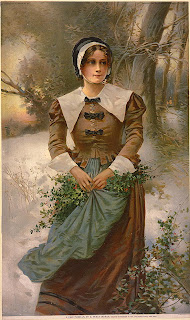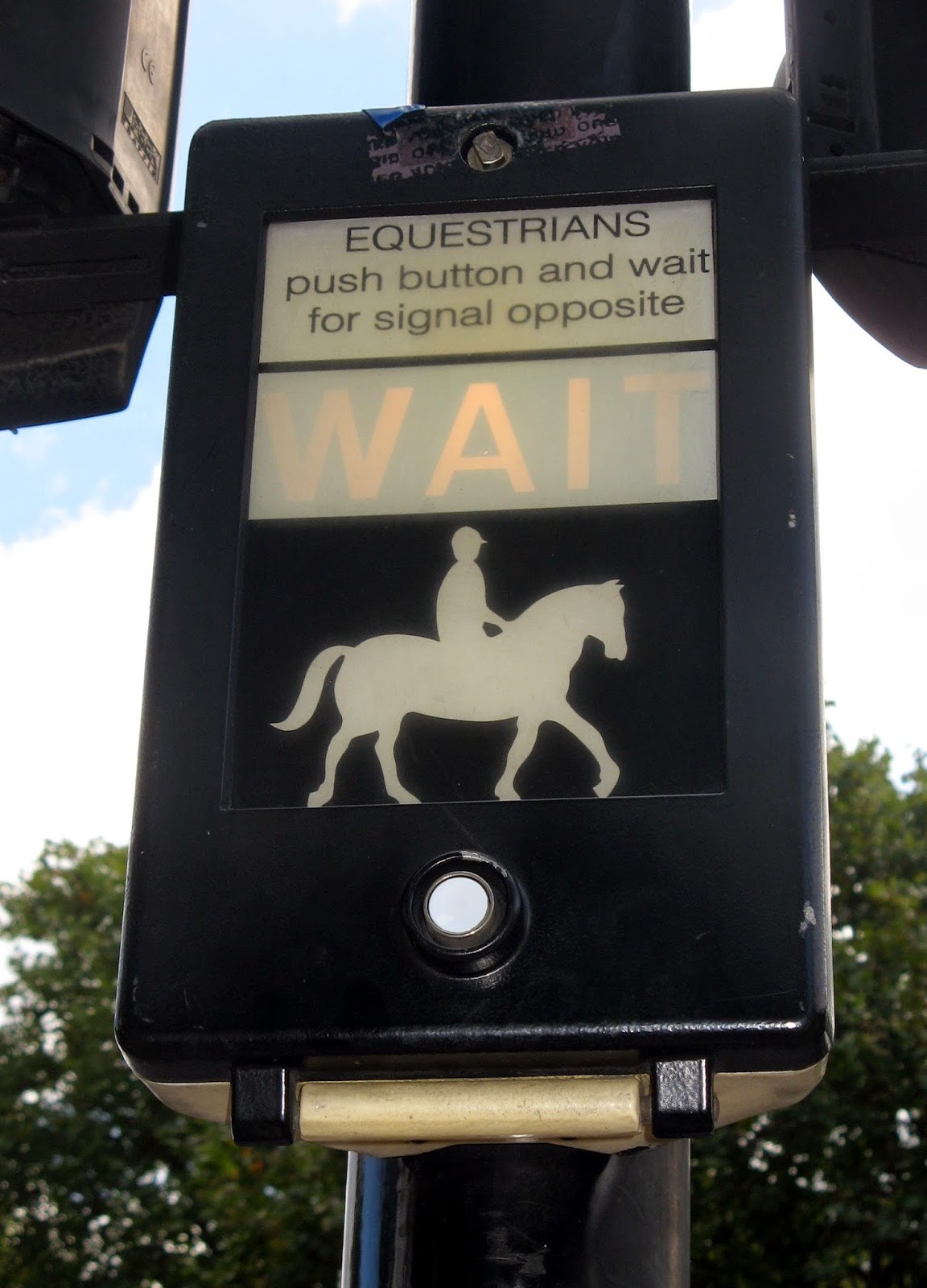Puritan Women in Literature - Suppressed, Witches and Symbols of Shame
 |
| Puritan woman at hearthstone |
A survey of Puritan women in early American literature reveals the strict, unjust Puritan model of community life.
 The omnipotent male hierarchy of the Puritan community conveniently stereotyped women as mothers, wives, and homemakers. Those who did not fit into the specified categories were labelled whores, evil types and old hags. In Nathaniel Hawthorne’s short story, "Young Goodman Brown," part of The Norton Anthology of American Literature, 1995, the majority of converts to Satanism are women, suggesting they are easily tempted by evil forces.
The omnipotent male hierarchy of the Puritan community conveniently stereotyped women as mothers, wives, and homemakers. Those who did not fit into the specified categories were labelled whores, evil types and old hags. In Nathaniel Hawthorne’s short story, "Young Goodman Brown," part of The Norton Anthology of American Literature, 1995, the majority of converts to Satanism are women, suggesting they are easily tempted by evil forces. Puritan Symbols of Shame
 The prophet Isaiah (1:18-19) associates the colour scarlet with sinful behaviour. This colour is used by Hawthorne in his short story "My Kinsman, Major Molineux" for the garments of the "fair and hospitable dame" (556). In addition, Hawthorne's novel, The Scarlet Letter, blatantly reiterates the meaning of this symbolic colour when character Hester Prynne, scorned by her community, is forced to embroider a scarlet ‘A’ on her clothes after committing adultery and bearing a "sin-born infant" (54). Such conduct portrays not only the narrow-minded and skeptical views of the elders of the Puritan community but also the patriarchal society’s willingness to apportion blame unjustly.
The prophet Isaiah (1:18-19) associates the colour scarlet with sinful behaviour. This colour is used by Hawthorne in his short story "My Kinsman, Major Molineux" for the garments of the "fair and hospitable dame" (556). In addition, Hawthorne's novel, The Scarlet Letter, blatantly reiterates the meaning of this symbolic colour when character Hester Prynne, scorned by her community, is forced to embroider a scarlet ‘A’ on her clothes after committing adultery and bearing a "sin-born infant" (54). Such conduct portrays not only the narrow-minded and skeptical views of the elders of the Puritan community but also the patriarchal society’s willingness to apportion blame unjustly.Puritan Witches
 The patriarchs frequently denounced women whose lifestyles did not correspond to the Puritan model. According to the Salem Witch Trials Chronology, women whose behaviour or economic circumstances disturbed the social order and conventions of the time were denounced as witches.
The patriarchs frequently denounced women whose lifestyles did not correspond to the Puritan model. According to the Salem Witch Trials Chronology, women whose behaviour or economic circumstances disturbed the social order and conventions of the time were denounced as witches. |
| Scarlet Letter - T. H. Matteson |
Through his writing, Hawthorne attempts to exorcise his guilt concerning his ancestor John Hathorne's involvement in the Salem witch trials. He portrays within his story, "Young Goodman Brown," the Puritan Society's perception of deviant women, by ascribing them qualities associated with hags; "the one hobbling before us" (578), "an old dame ' with a "withered neck . . . mumbling some indistinct words," "cackling aloud" (579).
The Salem Witch Trials Chronology notes that magistrates such as Hathorne condemned thirteen women to death using judgements and evaluations “based on various kinds of intangible evidence, including direct confessions, and supernatural attributes such as 'witchmarks.'" Some of the accused had previous criminal records, including witchcraft, but others were pious, well-respected people in the community.
Leaders of Dissent
In occurrences where free-spoken women could not be classified as deviant, the elders classified them as leaders of dissent. In such cases they were either banished from the community or punished. An example being Anne Hutchinson, described by John Winthrop in his journal in the Norton Anthology, as "a woman of a ready wit and bold spirit" (114). Hutchinson challenged the traditional subordinate role of woman in Puritan society. She "believed that the government should not force any form of religion by law and that every person should be free to worship God according to his conscience" (Beard and Beard, 20-21).
Hutchinson’s weekly meetings for women which gave her a platform for expressing her own religious convictions, greatly disturbed the Puritan fathers. John Winthrop took legal action against her meetings considering them "gross errors" (115). Eventually, Hutchinson was sent to trial and banished from her community; following which Winthrop remarked:
"Indeed, it was a happy day to the churches of Christ here, and to many poor souls, who had been seduced by her, who, by what they heard and saw that day, were (through the grace of God ) brought off quite from her errors, and settled again in the truth" (116). The Patriarchal society designated women a sphere within which to exist. Any movement beyond their circumscribed borders posed a threat to the patriarchy, and resulted in removal or added suppression.
Puritan Women Suppressed and Denied Freedom of Speech
Puritan Women Suppressed and Denied Freedom of Speech
 |
| A Fair Puritan E. Percy Moran |
From perusing the contents pages of an anthology of early American literature one can surmise from the lack of women writers listed in the contents that they had little influence in their communities. An analysis of creative works and historical events from that period compounds this hypothesis. The patriarchal Puritan society, afraid of losing control, suppressed any form of activity which disturbed their social order. Lapses or dissension were not tolerated by the inflexible theocracy and resulted in ostracism or even death. Although relative to their European counterparts Puritan women were well-educated and attained more rights as citizens, the strict regime of Puritanism limited women mentally and physically, thwarting their original quest for freedom from "over-government" in England. Ironically, The "New World" associated with freedom, individuality, and optimism offered them little hope of personal development.
Sources:
- Anderson B.S. and J.P. Zinsser. A History of Their Own: Women in Europe From Pre-History To The Present: Volume II. New York: Harper Perennial, 1989.
- Beard, C. and M Beard. A Basic History of The United States. The New Home Library, New York, 1944.
- Hawthorne, N. The Scarlet Letter. Harmondsworth, Middlesex: Penguin, 1994.
- The Norton Anthology of American Literature. W.W. Norton & Company, Inc. New York, 1995.
- Salem Witch Trials Chronology, Salemweb.com , accessed, February 23, 2011.
First Published, Feb 23, 2011 by Lesley Lanir on Suite101.com
Copyright Lesley Lanir. Contact the author to obtain permission for republication.



Comments
Post a Comment